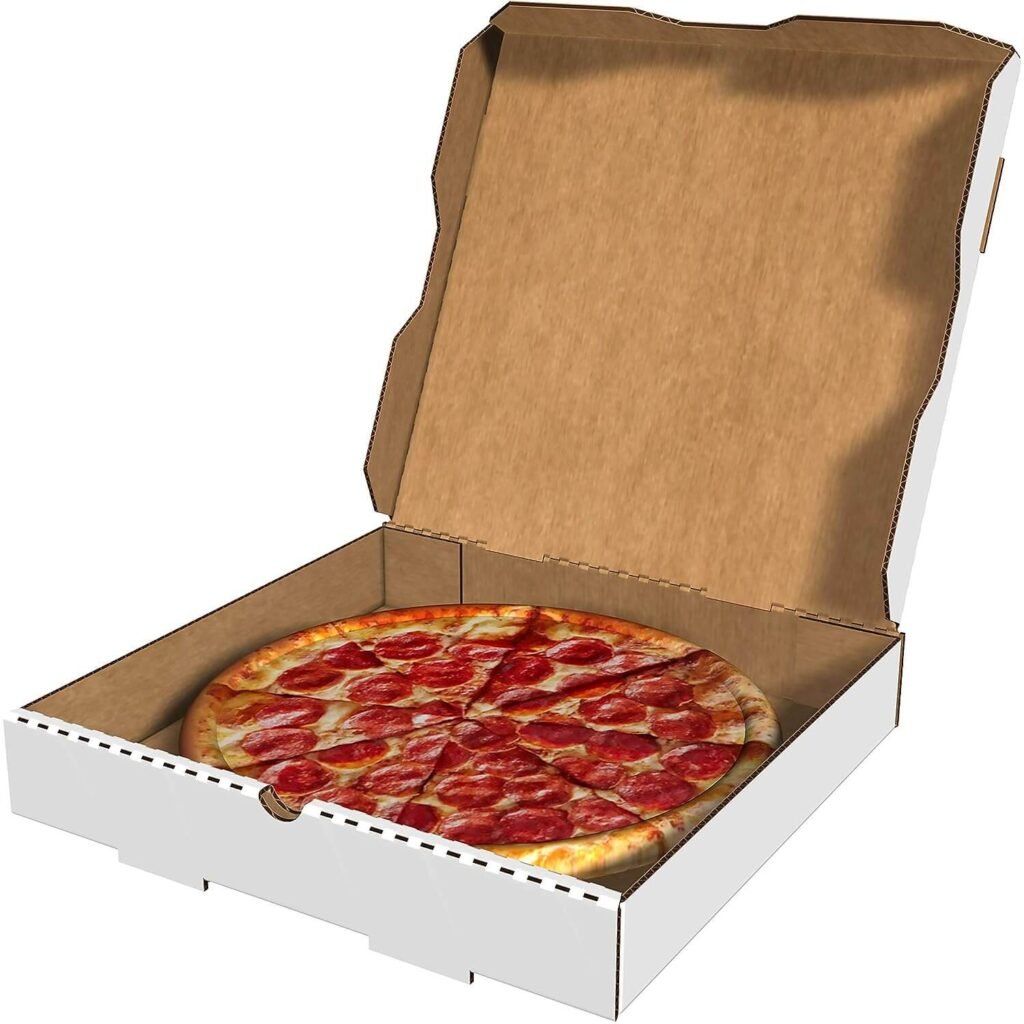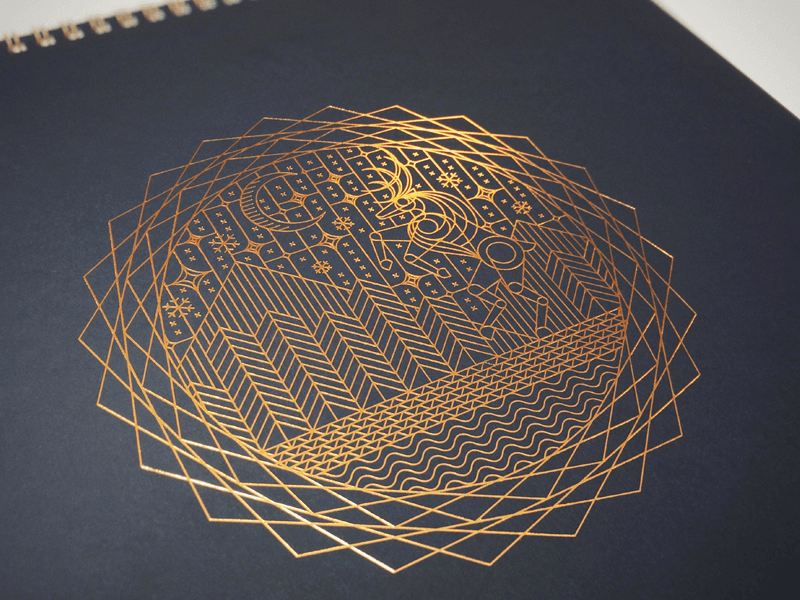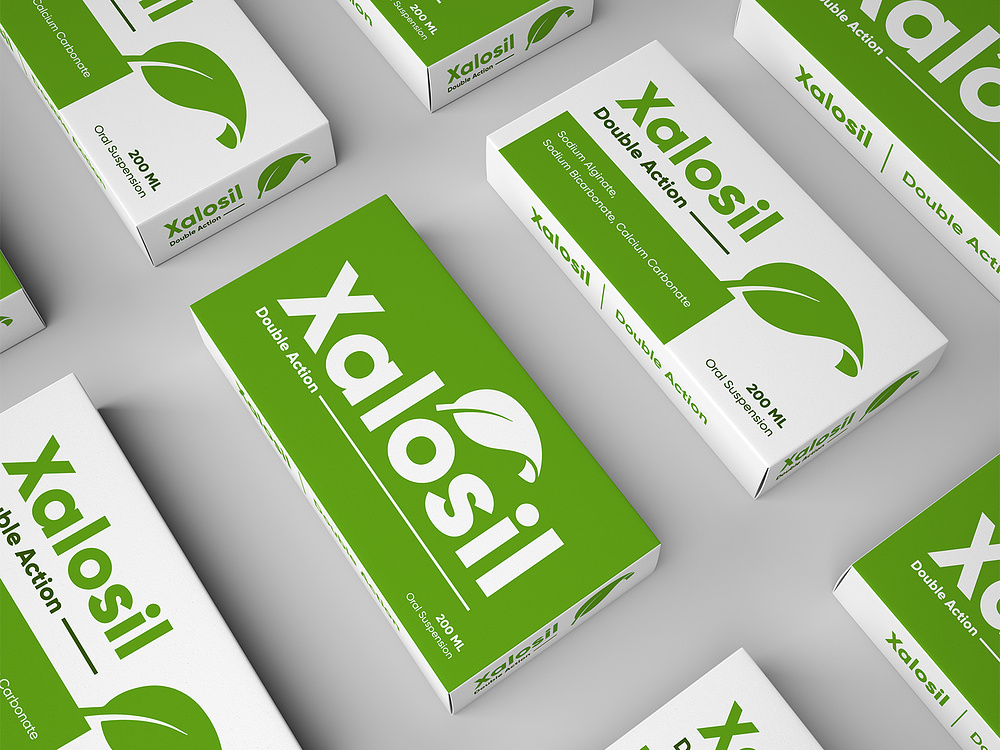If you’re a pizza enthusiast, whether you prefer the convenience of delivery or the allure of store-bought varieties, chances are the question has crossed your mind: Can you really place cardboard in the oven? This culinary puzzle emerges when we unpack a steaming pizza enclosed in its trusty cardboard box or when we pop a store-bought frozen pie, packaging and all, into the oven. Does the cardboard contribute to the pizza’s coveted crispness? Is it safe to expose cardboard to oven temperatures? In short, the answer is a resounding no. In this article, we will delve into the reasons behind the inadvisability of using cardboard in the oven. Furthermore, we’ll provide you with an alternative approach to reheating pizza that doesn’t involve cardboard.
Whether through a delivery order or a supermarket visit, pizza frequently arrives accompanied by its trusty sidekick, cardboard. Perhaps you’ve accidentally let the cardboard disc slide into the oven along with your frozen pizza, leaving you pondering its fate. Is it fit for baking? Does the cardboard enhance the experience? And what about reheating within the pizza box itself? While some individuals have brushed off these questions and used cardboard without apparent issues, others have faced less fortunate outcomes. However, let us make it unequivocally clear – subjecting cardboard to the oven is an unequivocal no-go. The following passages will illuminate the rationale behind this advice.

Can You Safely Put Cardboard in the Oven?
It’s a culinary conundrum that has sparked curiosity and caution alike – can you, or should you, place cardboard in the oven? The verdict is clear: you should never even consider it. Why? Well, for one, cardboard is inherently combustible. This means it has the potential to catch fire or ignite when exposed to specific temperatures. In the case of cardboard, that critical temperature is 427°F (220°C). To clarify, as long as the cardboard remains below this temperature, it theoretically won’t burst into flames. But here’s the catch – the level of risk varies depending on the type of oven you’re using.
If your kitchen boasts an older oven, be prepared for a higher risk of ignition. This is because these models tend to have more exposed heating elements within the oven cavity. In contrast, newer ovens are designed with a more robust covering for these elements, mitigating the risk of ignition. However, the fundamental truth remains: regardless of your oven’s vintage, the hazardous gamble of inserting cardboard into your oven is simply not worth it.
Anecdotal accounts exist from individuals who’ve reportedly used cardboard in their ovens without incident. But let’s dissect this further – their success might very well stem from not reaching the dreaded 427°F mark. Yet, let’s not be misled by a seemingly “safe” oven setting; the potential for sparking a fire remains ever-present.
Placing cardboard in the oven beneath a pizza – where it’s not in direct contact with the heating elements – might seem like a lower-risk proposition. But let’s not be fooled; the risk lingers. The bottom line is that there’s absolutely no justification for subjecting your oven, your home, and your safety to potential disaster. A host of superior alternatives exist, all of which offer a much safer path to perfectly heated leftovers without the looming threat of turning your kitchen into an unintended bonfire.
Why Frozen Pizza Comes Wrapped in Cardboard
In a culinary world where the hazards of cardboard in the oven are crystal clear, a puzzling question arises: Why do manufacturers insist on packaging frozen pizza with the very material we’ve established is a fire risk?
The rationale behind this choice stems from a practical consideration – providing much-needed support for the pizza’s foundation. Imagine for a moment that frozen pizzas came without anything underneath. The result? A floppy mess, with toppings sliding off and cheese merging into an unappetizing amalgamation. But let’s go beyond this hypothetical scenario and delve into the tangible journey of a frozen pizza – from its inception at the manufacturer to its final destination in your oven.
The journey from manufacturer to store shelves is no easy feat. The frozen pizzas endure bumpy rides, jostling, and temperature changes that could wreak havoc on their structural integrity. Enter the humble piece of cardboard, a surprisingly ingenious solution that ensures the pizza maintains its shape and composition throughout this journey.
It’s all about practicality and efficiency. A simple layer of cardboard acts as a stabilizing force, preventing the pizza from bending, shifting, or succumbing to the tumultuous voyage. Picture it as a safeguard against the culinary chaos that could ensue without this unassuming protector.
However, here’s the pivotal point: manufacturers are well aware that cardboard and ovens should remain strangers. That’s why, when you peruse the instructions on your frozen pizza packaging, you’ll consistently encounter the same message – remove the cardboard before placing the pizza in the oven. It’s a subtle reminder that, while cardboard might play a crucial role in preserving pizza integrity during transit, it’s no match for the oven’s scorching embrace.
So, the next time you’re confronted with a frozen pizza package, take a moment to appreciate the unsung hero that is cardboard, serving dutifully to safeguard your pizza’s journey from production to your plate. Just remember, though it’s an essential ally in preserving pizza perfection, it’s a role that ends well before the oven’s heat comes into play.
Why Cardboard and Ovens Should Never Cross Paths
When it comes to the ill-advised partnership of cardboard and ovens, three compelling and non-negotiable reasons exist why this union should never see the light of day.

1. Oven Inferno: Let’s address the elephant in the room – the looming specter of an oven fire. The mere thought of sparking spontaneous combustion within the confines of your oven should be sufficient to quash any inklings of using cardboard as a baking companion. The consequences extend beyond a mere culinary catastrophe; we’re talking about a potential inferno that can devastate not only your beloved oven but also engulf your kitchen in a cloud of smoke and, in the gravest of scenarios, trigger a house fire. The risk simply outweighs any potential convenience or culinary experimentation.
2. Languishing Cook Times: Picture this: you’re eagerly anticipating sinking your teeth into a piping-hot pizza, only to be met with prolonged, excruciating wait times. This could become your reality if you decide to leave that seemingly innocent cardboard round beneath your pizza. While it might provide a flimsy barrier between your pizza and the oven’s heat source, it effectively extends the cooking duration. Your crust, that coveted canvas for toppings, will languish in undercooked mediocrity. The result? A culinary experience far removed from the crispy perfection you desire.
3. Toxic Chemical Tango: Beneath the surface, a sinister chemical dance takes place when cardboard meets oven heat. The cardboard underneath your pizza is often treated with an anti-grease layer, a precaution to prevent unsightly sogginess. Yet, when this cardboard is subjected to the oven’s scorching embrace, those protective chemicals are released into the air, like an invisible toxin. These fumes, absorbed by your once-delectable pizza, not only distort its flavor but also introduce the unnerving prospect of ingesting potentially harmful substances. The end result? A meal tainted by an unwelcome cocktail of chemicals that have no place in your kitchen or your body.
The verdict is unequivocal: cardboard’s place is under the pizza, not in the oven. The trifecta of risks – from igniting an inferno to prolonging cook times and releasing toxic fumes – underscores the unwavering importance of this rule. So, let the oven be the realm of bakeware and the delectable art of pizza-making, while cardboard stands as a crucial ally in preserving pizza integrity during transit – a role it fulfills with distinction, but one it should never exceed.
How to Cook or Reheat Frozen Pizza Without Cardboard
Although frozen pizzas often come nestled in cardboard, and delivery pizzas arrive in cardboard boxes, you need not involve cardboard in the culinary process. As you embark on your pizza-cooking journey, take heed: a quick read of the package directions will unveil the method best suited to achieve that sought-after crispness.
1. Directly on the Oven Rack:
One of the most popular methods involves placing the pizza directly on the middle oven rack. Initial concerns about melted cheese dripping aside, this technique ensures even baking throughout. For optimal results, position your pizza on the middle rack. Placing it too low risks scorching the bottom, while placing it too high can lead to burnt cheese. The middle rack is where perfection takes shape.
2. The Magic of the Pizza Stone:
Enter the pizza stone – a ceramic wonder crafted for this very purpose. It provides a pristine surface for your pizza, sparing your oven from any cheese-induced mishaps while delivering an irresistibly crisp crust. Once baked, effortlessly slide the stone out and slice up your masterpiece.
3. Baking Sheet Brilliance:
If a pizza stone isn’t on hand, a trusty baking sheet steps in. Lay your pizza atop the sheet, following package instructions. No parchment paper or aluminum foil is necessary – a bare sheet is all you need for that delectable crispness without the fear of sticking.
4. The Round Charm of the Pizza Pan:
Much like a baking sheet but in round form, the pizza pan provides a snug fit for your pie. Unlike rectangular pans that might not fit evenly, a pizza pan ensures an even bake for your pizza masterpiece.
5. Aluminum Foil’s Protective Embrace:
Another option is wrapping the pizza’s underside with aluminum foil or wrapping the foil around your oven’s rack. Aluminum foil is oven-safe and offers protection. Just remember to apply the foil before preheating to avoid any unintended mishaps.
6. Trusty Baking Dishes:
For the resourceful, a casserole or baking dish is a viable choice. Though glass or ceramic dishes may extend baking times, they offer a secure route when other options are scarce.
In your pursuit of pizza perfection, remember – cardboard may play its role in transit, but the cooking process demands more reliable allies. So, whether you go for the oven rack, a pizza stone, a baking sheet, a pizza pan, aluminum foil, or a baking dish, let your culinary adventure unfold without the cardboard interference.
How Do You Reheat Pizza Without Cardboard
In a previous discussion, we explored the art of baking frozen store-bought pizza without involving cardboard packaging. Now, let’s tackle the world of delivery pizza – that delicious treat that arrives in a cardboard pizza box. Remember, never place the pizza box itself in the oven. Instead, try these straightforward methods to resurrect your cold delivery pizza to its former warm glory.
1. Oven Resurgence:
Preheat your oven and prepare any of the trusted kitchen tools we’ve covered earlier. A baking sheet, pizza stone, pizza pan, or even aluminum foil will do the trick. Here’s a tip: avoid placing pizza slices directly on the oven rack, as their small size and thinness could lead to slipping and sliding. Opt for one of these kitchen tools to ensure a crispy crust and melted cheese topping.
2. Toaster Oven Efficiency:
When time is of the essence, the toaster oven steps in as the speedy solution. Its compact size means quicker preheating, making it a fantastic option for reheating pizza in half the time. Just place your pizza slices directly on the toaster oven tray to enjoy that crispy crust once again.
3. Microwaving Magic:
Admittedly, this is my personal go-to method for pizza reheating – not because it’s the finest, but because it’s undeniably easy. Lay your pizza slices on a microwave-safe plate and heat for less than a minute. While the outcome won’t boast a crisp crust, your pizza will warm up delightfully.
4. Grilling Excellence:
If the sun is shining and your grill is fired up, consider this delectable approach. To avoid any unfortunate dough-to-flame encounters, place your pizza slices on aluminum foil before grilling. This method introduces a smoky twist to your reheating adventure.
5. Stovetop Sizzle:
Though not the most conventional option, the stovetop presents a viable avenue for pizza revival. Heat up a large pan over medium-high heat and gently nestle your pizza slices inside. While the crust gains a pleasing crispness, remember that it might take a bit longer for the cheese to melt to perfection.
Whether you opt for oven, toaster oven, microwave, grill, or stovetop, you can relish the joy of warm, revived pizza – all without the need for cardboard involvement. So, go ahead and choose your pizza reheating adventure, free from any constraints.
FAQS
Frequently Asked Questions (FAQs) About Using Pizza Boxes in the Oven
Q: Can you put a pizza box in the oven?
A: No, it is strongly advised never to put a pizza box in the oven. If the cardboard reaches temperatures around 427 degrees Fahrenheit, it can ignite. Even at lower oven temperatures, there is a risk of fire, especially with older ovens. To prevent fires, avoid placing any kind of cardboard in the oven.
Q: Is it OK to cook pizza on cardboard?
A: No, it is not safe to cook pizza on cardboard. If your frozen pizza is on a circular piece of cardboard, ensure you remove it before cooking the pizza.
Q: At what temperature does cardboard catch fire? A: Cardboard catches fire at approximately 427 degrees Fahrenheit.
Q: What are some considerations when putting a pizza box in the oven? A: Factors like fire hazards, chemical release, and the safety of the pizza box material need to be taken into account. Generally, it’s safer to reheat pizza using alternative oven-safe methods.
Q: What happens if you put a pizza box in the oven? A: Placing a pizza box in the oven increases the risk of fire, potential chemical contamination, and compromised food safety.
Q: What temperature can you put a pizza box in the oven? A: For reheating, it’s recommended to set the oven at 375°F (190°C). To keep pizza warm, a temperature around 170°F (76°C) is suggested.
Q: Can I put a pizza box in the oven at 170? A: While it is technically possible, it is not advisable to put your pizza box in the oven at 170 degrees or any other temperature such as 350, 250, or 200. Opt for oven-safe alternatives when reheating or keeping pizza warm.
Q: Can you put a Little Caesars box in the oven?
A: Yes, you can put a Little Caesars box in the oven. Since the box is made of corrugated cardboard, it is safe to use in the oven as long as it is kept away from direct contact with heating elements.
Q: Can you put pizza boxes in the oven to warm up?
A: Generally, warming up pizza boxes in the oven is not recommended. To prioritize safety and minimize risks, consider using oven-safe alternatives for reheating your pizza.
Final Thoughts
The cardinal rule remains steadfast: cardboard and ovens should never collide. Although some individuals may have ventured into the realm of placing cardboard in the oven – intentionally or inadvertently – it’s a path best avoided. While the ignition point for cardboard hovers at 427°F, the potential for combustion looms even if your oven’s design is modern. Particularly concerning are older models with exposed heating elements, where the risk of fire escalates significantly.
Even in the case of newer ovens, caution should reign supreme. The risk, by far, outweighs any perceived convenience. With a plethora of alternatives at your culinary disposal, from reheating pizza to warming other delectables, there’s never a legitimate need to welcome cardboard into your oven.
Want to design your ideal packaging box for your pizza box? Contact us for a free quote!






